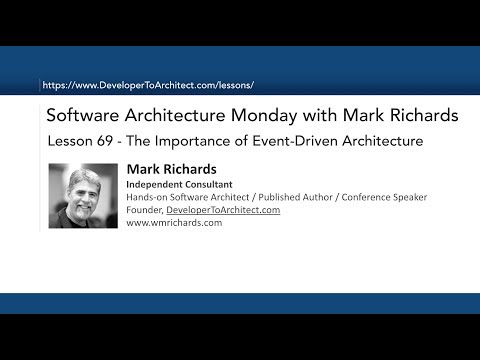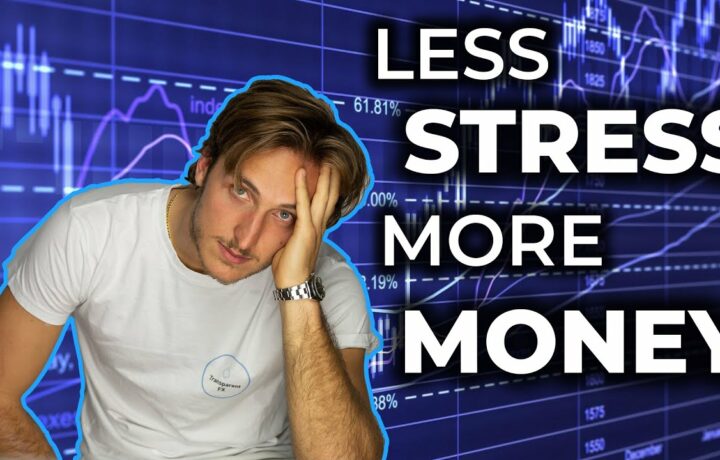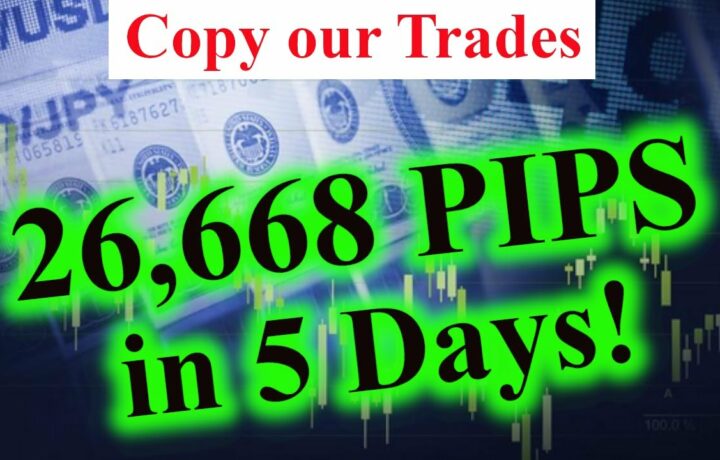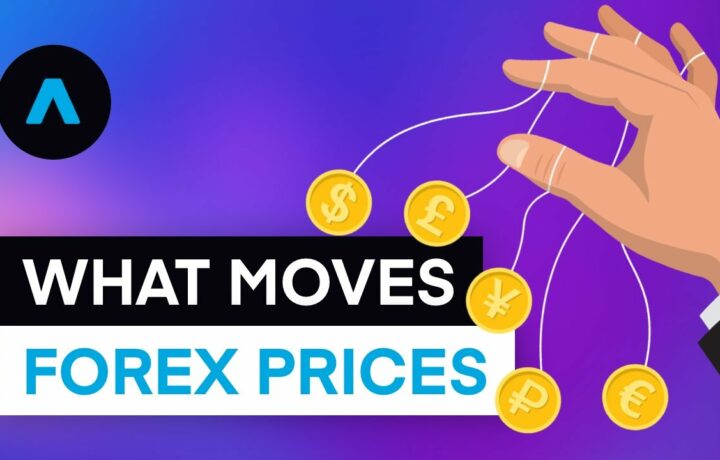Search More info Relevant to Event Driven Strategy PDF, Lesson 69 – Importance of Event Driven Architecture.
In this lesson Mark Richards explains the differences between request-based architectures and event-driven architecture, and why event-driven architecture is so critical for today’s business applications. Knowing architecture is all about tradeoffs, Mark also discusses the advantages and disadvantages of event-driven systems, and when to use event-driven and when to use request-based.
Links from the video:
Gartner Paper: https://www.gartner.com/ngw/globalassets/en/information-technology/documents/top-10-strategic-technology-trends-for-2018.pdf
Software Architecture Patterns Book: http://www.oreilly.com/programming/free/software-architecture-patterns.csp
Software Architecture Fundamentals Video: https://learning.oreilly.com/library/view/software-architecture-fundamentals/9781491998991/
Stay tuned every other Monday for more lessons in Software Architecture at https://www.developertoarchitect.com/lessons/.

Event Driven Strategy PDF, Lesson 69 – Importance of Event Driven Architecture.
Measurable Event Trading Versus Over-Simplistic Assumptions
Spikes don’t differ much in this regard, they just occur over a smaller sized home window of time. A spike occurs in the first place because the market has actually just learned brand-new information, information which is not yet “valued in”. Depending upon the intensity of the information, the spike will be large or tiny, and proceed or fall short. To explain this principle a little far better, I’m going to mention what several event-driven quantitative methods do on a regular basis:
Designers of these event-based (spike) trading methods are able to quantify information recovered from financial information releases rather quickly. They just take the inconsistency from the real and anticipated number, couple it with other financial information releases that occur then in time (if needed), take the ordinary change in cost prior to and after certain deviations occur, the duration in which these changes occur, and are able to maximize a method based upon this and any other technical factors they wish. They have a history of information (numbers) with which to work.
In all of the factors noted above, numbers are available, and equipments need numbers. Yet what happens when a spike is triggered by a remark from a high ranking government official? No numbers there, just words. Yes, words.
What regarding words? Words, when it pertains to programming, can be numbers. Let me explain:
Words are weights, when gauged against each other in relation to cost motions. “downgrade” carries a various weight than “stimulus” or “protect” or “shield the currency”, etc., relying on that it is originating from and the context of other words made use of at the time.
High and low ranking government officials can be weights. The high ranking government official considers more than a low ranking government official, etc. A score agency, and the words made use of in their press releases, can be weight. AND SO ON etc.
So when you take an industry-standard information feed, designate weights (numbers) to every little thing discussed over against ordinary cost motions, time, other technical factors, etc., you end up with an example of information that can be enhanced right into a possibly successful trading approach.
And while I know all of it may seem ridiculous initially, if you assume I’m just drawing your leg on all of this, think again. While I’m offering an extremely simplified description of the principle, it is certainly made use of in mainly all markets by different individuals, and most definitely in this one.
Just how does a stop-loss order work?
When you put a stop-loss order, in some cases described just as a ‘stop order’, you’re advising your broker to implement a trade on your behalf at a less beneficial degree than the current market value.
You’ll normally do this to limit your losses on a placement, in the event that the market moves against you. Set your stop-loss at a certain degree, and your broker will shut your position for you when the market strikes that degree so you don’t need to enjoy the markets continuously.
It’s worth keeping in mind that stop-loss orders do not shield against slippage resulting from markets ‘gapping’, or moving a large distance in an instant because of unforeseen external influences. You can guarantee your trade is performed at precisely the degree defined by using an assured stop. With IG they’re cost-free to location, and carry a tiny costs if activated.
If you’re positioning a stop-loss order on a lengthy trade a trade where you’ve acquired a market in the expectation that its cost will go up your stop-loss order will be a guideline to cost a worse cost than the one you opened your trade at. On the other hand, a stop-loss order on a short trade (where you’re marketing a market) is a guideline to purchase a worse cost than you opened up at.
What’s implied by ‘danger’ in trading?
In trading, ‘risk’ refers to the possibility of your choices not causing the outcome that you anticipated. This can take the form of a trade not carrying out as you would certainly believed it would, meaning that you earn less or certainly, shed more than originally anticipated.
Trading danger can be found in a range of forms. One of the most usual is ‘market danger’, the general danger that your trades may not execute based upon unfavourable cost motions impacted by a range of external factors like economic crises, political discontent and so on.
Investors are normally prepared to take on some level of danger in order to join the markets, and with any luck make their trading successful gradually. How much trading danger they’ll take on relies on their approach, and the risk-reward proportion they’ve set on their own.
It’s therefore important to acknowledge how much resources you can stand to risk, both on a per-trade basis and as a whole gradually.
Final Thoughts:
Event-driven trading methods provide a wonderful way to take advantage of enhancing cost volatility, but there are many risks and limitations to take into consideration. When developing and implementing these methods, it is essential for traders to establish tight danger controls while giving sufficient space for the unpredictable scenario to play out in the market. In the end, event-driven trading methods provide an important arrow in the quiver of any type of energetic trader.
Search Trending Stories Relevant to Event Driven Strategy PDF and Financial market information, analysis, trading signals and Foreign exchange financial expert evaluations.
Disclaimer:
Any point of views, information, study, analyses, rates, other information, or links to third-party websites consisted of on this site are provided on an “as-is” basis, as general market commentary and do not comprise investment guidance. The marketplace commentary has actually not been prepared based on lawful demands designed to promote the self-reliance of investment study, and it is therefore not subject to any type of restriction on dealing ahead of circulation. Although this commentary is not generated by an independent resource, “TradingForexGuide.com” TFG takes all adequate steps to eliminate or stop any type of disputes of rate of interests emerging out of the manufacturing and circulation of this communication.




